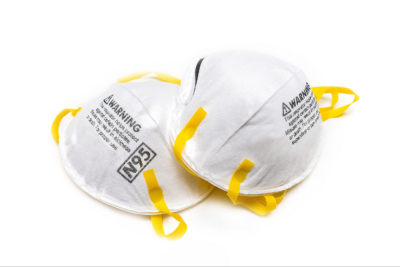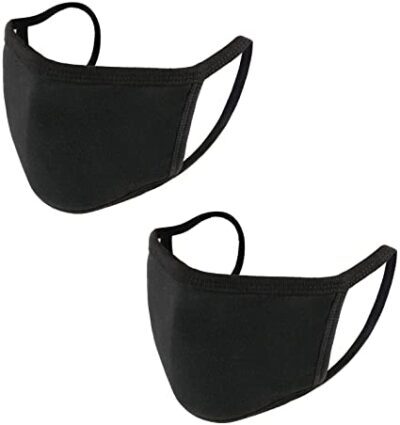Face masks seem to be the new order of the day for us all across the country because of the COVID-19 (coronavirus) pandemic. Yet, many seniors don’t know how to wear or handle a face mask properly. During this pandemic, it is crucial that practically everyone wears a face mask in public because they add an extra layer of protection against this scourge. Using a covering when you’re around others can help block large particles that you might eject through a cough, sneeze, or unintentionally launched saliva (e.g., through speaking), which could slow the spread of transmission to others if you don’t know you’re sick.
Why do you need to wear a face mask?
According to the Centers for Disease Control and Prevention (CDC), folks can make you sick even if they do not have symptoms or before their symptoms surface. So, the bottom line for wearing masks is to prevent infected people from passing on the infection, not prevent the wearer from getting infected.
Who should not wear a face mask?
As per the CDC, folks who have trouble breathing, children under age 2, anyone who is unconscious, or who can’t remove a face mask without assistance, should not wear a face mask.
Should a mask fit a certain way on your face?
Your mask should fit comfortably, make sure the majority of your nose and your entire mouth is covered. The chin does not need to be covered, but it is easier to get a good seal around the mouth if the chin is used to support it. Small gaps are normal and unavoidable, but the fewer there are and the smaller they are, the better. Most importantly, you should still be able to breathe while wearing a mask
Can you touch your face mask when wearing it? How to remove it.
DO NOT TOUCH THE FRONT OF THE MASK WHEN WEARING IT; GERMS LIVE THERE! If you need to adjust your face mask while on, wash your hands before doing so immediately afterward. If you need to take your mask off for a short time, remove it by the ear loops or ties.
What are the best kinds of face masks?
Surgical grade N95 respirators are the holy grail of protection against the coronavirus infection because they help filter at least 95% of airborne particulates. The next best face mask is the surgical grade masks. These masks are in limited supply and are primarily used by healthcare workers. The CDC now recommends a tight-fitting mask of any covering, including a bandana, is better than nothing at all.
If you opt for a cloth mask, use at least two layers of a tightly woven fabric for protection, even better, add a pocket for a filter (make sure there is no fiberglass in it!!). Paper towel sheets or disposable coffee filters can be used in masks for added protection. Neoprene masks can also help stop the droplets that may carry the virus. Quilter’s cotton filters out a lot of particles, especially tight weaves with thicker threads, such as batik. Masks with cotton outer layers and flannel inner layers also work well.
How to care for your face mask
Washable face masks should be cleaned in hot water and detergent after each wear. Be sure to scrub each section of the mask for at least 20 seconds and rinse it through entirely. Soap acts to break down the virus and to detach the virus from whatever surface [it’s on], including the skin. After washing, lay the mask completely flat to dry, pick a location where the risk of contamination is low. Masks should be completely dry before they are used again. If you have a disposable mask, place it in a baggie or plastic bag, and toss it after each use. Cloth masks should be changed as soon as they get damp or dirty.
Should you wear a face mask at home?
A face mask should only be worn in the home if someone is ill or caring for a sick person.
Do wearing face masks cause health problems?
If you wear an N95 face mask and have it on for several hours, health problems like headache, lethargy, and dizziness can occur. The risk for health issues is extremely low when wearing cloth and surgical masks because they allow you to breathe more freely.
Folks with underlying anxiety disorders or claustrophobia can be particularly affected by the emotional discomfort of wearing face masks. For most people, however, the discomfort of the mask wearing is subjective and tends to diminish as they get used to wearing the mask. Sometimes repeating a mantra helps bring about reassurance that ‘this too shall pass,’ and can help slow physical responses and regulate breathing. Inhaling an essential oil such as lavender has also long been used to relieve anxiousness and bring about a sense of calm relaxation.
Do face masks trap COVID-19 particles?
Yes, face masks may trap particles of the coronavirus, which is why you should not touch its front once worn. You can also spread the virus by not washing your hands immediately after touching your contaminated face mask.
Homemade face masks anyone?
If you happen to be good with a sewing machine, or needle and thread, visit the CDC’s website for easy-to-follow instructions on how to make your own cloth face coverings.













